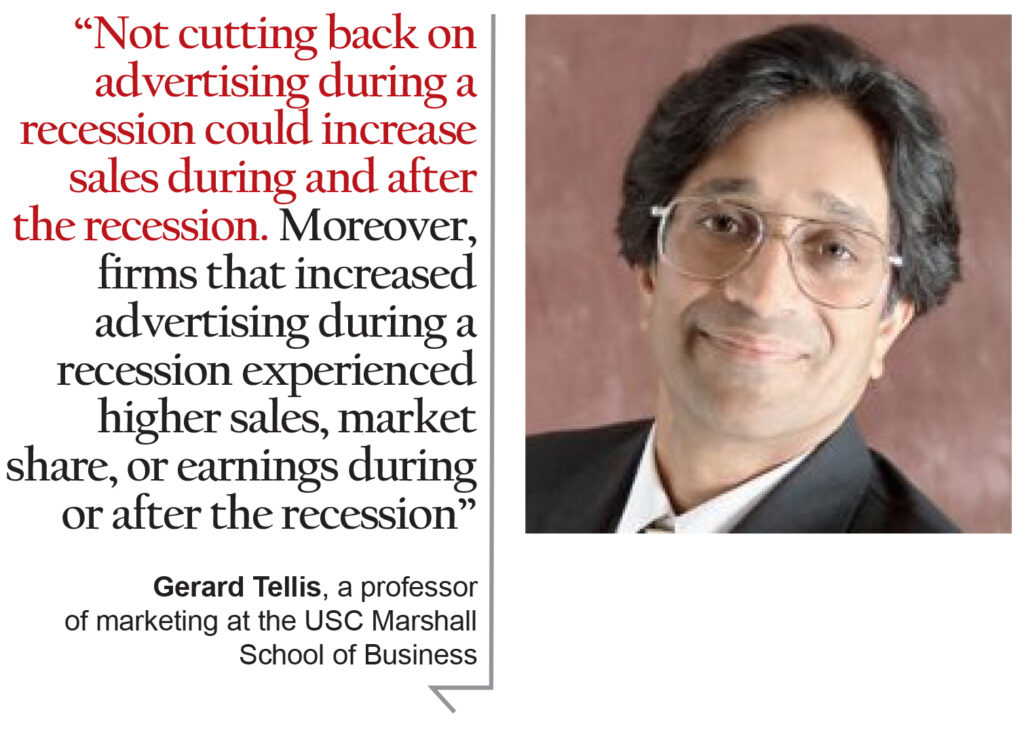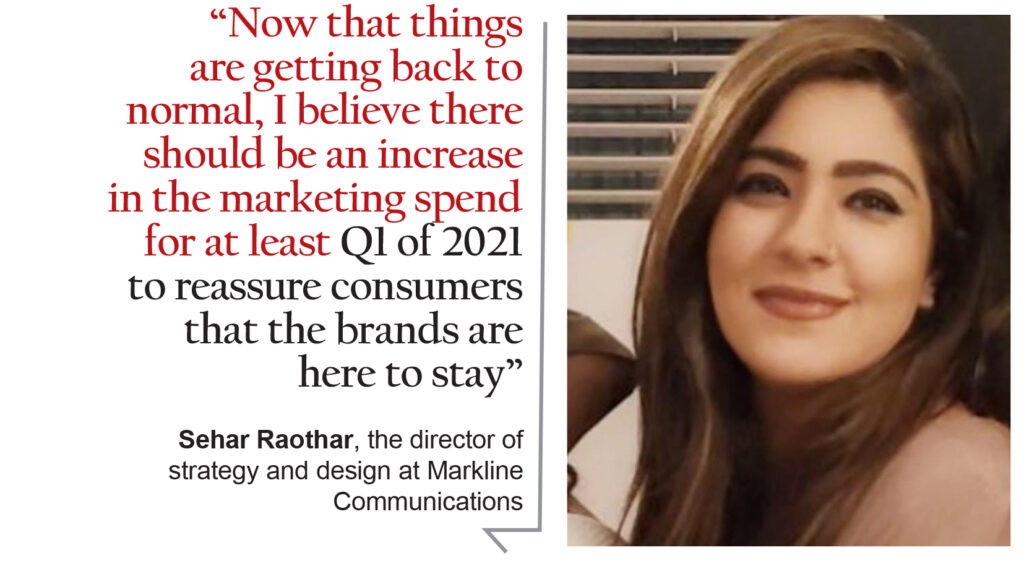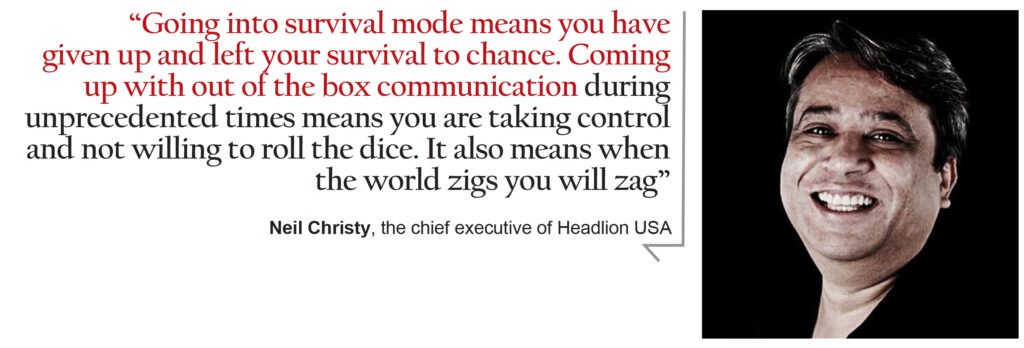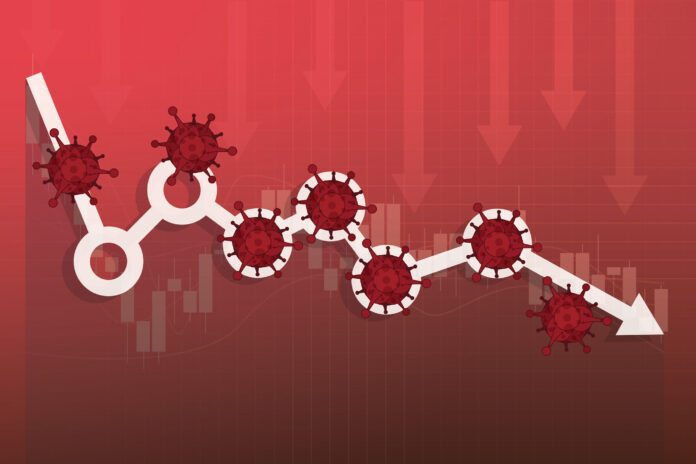Warren Buffet once advised investors to be fearful when others are greedy and greedy when others are fearful. In the context of advertising, primary and secondary research proves time and again that businesses that view marketing as an investment function continue to sustain branding and performance budgets even during a recession.
And yet, the June 2020 Global mid-year forecast from GroupM shows that COVID sharply transformed the global advertising economy from a 6.2% growth rate in 2019 to a decline of 11.9%, excluding the effects of increased U.S. political advertising. As a result of worldwide austerity measures slashing media expenditure, individual reports published by both Merkle and Kenshoo concluded that advertising on Google became 22% cheaper by the second quarter of 2020.
Subsequent reports further found that those marketers that sustained media spending not only capitalized on lower costs of customer acquisition or ad impressions due to advertisers fleeing media inventory across the spectrum, but also saw an even greater return on investment towards the third quarter of 2020.
In June, a senior media practitioner with a Publicis Groupe media agency affiliate told Profit that advertisers in Pakistan are expected to spend 10% less in FY 2021 due to the COVID-19 pandemic. Totalling $440 million, the revised media spending would be split across TV, digital, print, OOH advertising, brand activations, and radio, with a share of 39 per cent, 26 per cent, 14 per cent, 11 per cent, 6.3 per cent, and 2.1 per cent respectively. Without Covid-19 and the lockdown, the expenditure was expected to be $495 million with a similar spread.
“Our advice is ‘don’t stop marketing’,” said Keith Johnston, the vice president of the CMO practice at Forrester. “There is lots of evidence that those that keep marketing, those that stay resilient and adapt their businesses through times of crisis actually come out the other end succeeding. And in many cases, completely dominating their category. There are tonnes of other evidence that if you do stop marketing, you may be forgotten forever, so stay in the game.”
According to the 2009 paper A Critical Review and Synthesis of Research on Advertising in a Recession by Marshall School of Business professor of marketing Gerard J. Tellis, there is strong and consistent evidence that cutting back on advertising during a recession can hurt sales during and after the recession, without generating any substantial increase in profits.
“Such cutbacks can result in a loss in capitalization,” said Professor Tellis in the study. “On the other hand, not cutting back on advertising during a recession could increase sales during and after the recession. Moreover, firms that increased advertising during a recession experienced higher sales, market share, or earnings during or after the recession. Most of the [empirical studies that analyzed the effect of firm advertising on sales or market share] consistently showed that the strategy adopted for advertising during a recession had effects that persisted for several years after the recession.”

Tellis said that the most compelling reason to increase advertising during a recession is that most firms tend to cut back on advertising during a recession, as the aforementioned Warren Buffet quote reinforces. Tellis says that this behavior reduces noise and increases the effectiveness of advertising of any single firm that advertises.
“Thus, the firm that increases advertising in [a recessionary] environment can enjoy higher sales and market share,” he said. “When the economy expands, all firms tend to increase advertising. At that point, no firm gains much. However, the gains of the firms that maintained or increased advertising during a recession persist. This theory is also the most reasonable explanation for all the empirical effects of GDP on advertising and of advertising on sales, market share, and profitability. It is also a simple but strong refutation of the theory for cutting back on advertising during a recession.”
In How to Advertise in Uncertain Times: Lessons From COVID-19, Gartner analysts Andrew Frank, Anna Maria Virzi, and Eric Schmitt advise that marketers should protect brands, not budgets, adding that marketers should increase agility with shorter planning cycles.
“Move to a weekly or biweekly media planning cycle with emphasis on programmatic and local spot buying for maximum flexibility,” they said in the report. “Actively manage media agencies with frequent checkpoints and open communication channels. Seek retainer arrangements that remove agency incentives to promote nonessential media buying.”
Analysts from both Forrester and Gartner reiterated that organizations where marketers have demonstrated the link between advertising and sales saw no sizable reduction in budgets during the early days of the pandemic, with planners understanding that media inventory would undoubtedly be cheaper as businesses hastened to cut anything seen as a cost. This is direct opposition to organizations where advertising has proven itself to be an investment for growth.
“We haven’t cut any of our investments,” Andrew Garrihy, the global chief brand officer at Huawei’s consumer division. “I think probably the most surprising thing is we’re actually not only maintaining but increasing our investment. However, the shape of that investment, where we invest, has changed quite dramatically.”
Analysts from both Forrester and Gartner said that when organizations reduce advertising spending or make cuts in the marketing team, the butterfly effect can fall on the overall customer experience. This weakens the brand touchpoint from connecting with new and existing customers during the uncertain and emotional time of the pandemic and recession. The subsequent diminished volume of quality leads and sales pipeline nurturing further places customer success teams at a severe disadvantage.
“Lowering prices is a quick tactic that may yield only short-term results,” said Tim Barlow, a senior principal analyst at Gartner with an expertise in consumer insights and generational research. “While pricing strategy is important, it must be paired with a marketing effort that reflects the broader consideration set that consumers will utilize to justify spend during a downturn. Millennial consumers already employ this strategy, but marketers should expect a larger percentage of consumers to also consider the time-savings, social/relational benefits, and net global impact of products and services alongside purely financial value. These additional factors matter and can help give your marketing an edge in what will be an increasingly noisy marketplace.”
While analysts from both Gartner and Forrester suggest that marketers continue on with the dollar value of their investment, they do recommend that advertising agencies – particularly creative agencies – play their part in adjusting the messaging to demonstrate empathy, celebrate customers’ successes, and, ultimately, turn customers into vocal advocates. This is similar to the response in Pakistan, where demand generating messaging was slowed down amid an ability to match on supply.
Perspectives from Pakistan
In the first COVID-19 Barometer study from Kantar, recently presented during a webinar with the Pakistan Advertising Association (PAA), the research agency does not recommend that advertisers go dark, adding that advertisers need to ease anxiety by communicating more than before while investing in above-the-line media and compelling content. This perspective is backed by several BrandZ studies over the years which have proven that brands that advertise during times of uncertainty recover faster and grow more strongly once the crisis is over.
Neil Christy, the CEO of Headlion USA, spoke to Profit about the experience of running a mid-sized agency, a production house, and a restaurant during the 2008 recession which lasted till late 2009. He said that most clients had drastically cut their budgets, started delaying payments, and pushed us against the wall.

“For every problem a brand may have, ad agencies will recommend advertising as the solution,” he said. “We decided to practice what we preach. We put our money where our mouth was and set aside a budget of two million. This is huge for a mid-sized ad agency, especially during recession. This was spent in the most creative ways possible, a trait Headlion was known for and a positioning we strived for. We were the first to build awareness and excitement around our brand through strategically located billboards. We were the first to launch a DVC and used digital to build a brand. We organized huge networking events including the biggest Basant festival for clients.”
He told Profit that the revenue for Headlion Pakistan in 2007 was close to Rs. 40 million, dropping by 37.5% in 2008, and growing to Rs. 60 million by 2009. He attributes the sales growth to the investment in advertising, adding that his agency won UBL, DHL, PIA, and ICI as a result of advertising during the recession.
“When chips are down it is a great opportunity to connect with your customers and remind them that the brand is standing by them,” he said. “Industries and relevance matter, for example, it will not make sense for a cinema or a restaurant to start advertising during the COVID19 crisis, but staying silent is not an option. Going into survival mode means you have given up and left your survival to chance. Coming up with out of the box communication during unprecedented times means you are taking control and not willing to roll the dice. It also means when the world zigs you will zag.”
Abbas Arsalan, global head of insights at The Coca-Cola Company, told Profit that in the initial days of the COVID-19 lockdown, restrictions on the supply chain meant that there was no need to advertise or drive a sales uplift. The restrictions he is referring to were limitations on non-essential goods being transported from the factory to the warehouses and distribution centers, including the subsequent journeys.
“Society at large was looking for less of a brand message and more of social action,” said Arsalan. “Not many brands were ready for either a strong plan or they just didn’t want to engage in social action. Coke Studio 99 names of Allah was a very good example. Coca-Cola led with Coke Studio, its cultural leadership platform, and delivered a message of hope that united and uplifted everyone.it has gathered [over] 20million views in three months.”
He said that after the lockdowns were lifted and supply chains reverted to business as usual, ad spends benefitted in rebound plans, adding that the categories that advertised, albeit with a good message, were back to their previous year’s monthly sales by the July to August periods.
Shakeel Khokar, CEO of Interflow Communications, told Profit that most local businesses do not invest in brand tracking, brand health checks, or building brand equity, adding that with COVID-19 crippling the set in stone supply chain infrastructure overnight, the push to advertise and create demand may have worsened what little brand equity a business had.

“This cripples the brand for future and the rebuilding work costs significantly more, not just the marketing dollars but in fact all efforts would need to be more,” he said. “[Businesses need] to understand that online is just not a simple substitute for retail or the fact that footfall data cannot be of any help in sales forecast for online. This also helped us in categorizing objective based opportunities missed or gained during this pandemic period.”
Sehar Raothar, the director of strategy and design at Markline Communications told Profit that all antiseptic and sanitization products’ advertising should have no market spend reduction, adding that their communications channels should focus on above the line and digital with a ratio of 1:2 respectively.
Based on research by Markline Communications, Raothar predicts that below the line (BTL) will revive by early next year if the brand marketers deem it right to increase their marketing spend for the first quarter of next year. Till then, she believes the focus will remain on digital.
“Now that things are getting back to normal, I believe there should be an increase in the marketing spend for at least Q1 of 2021 to reassure consumers that the brands are here to stay,” she said. “The only difference should be the channel of advertising – go digital; costs less than the conventional marketing channels and generates a higher return on investment.”




